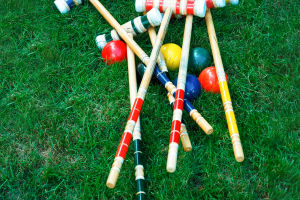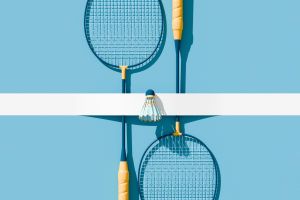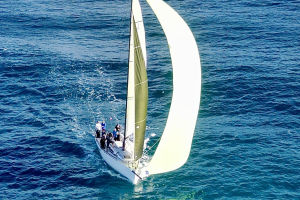Badminton is loved by fans all over the world, and the material used to make shuttlecocks, one of its core pieces of equipment, is particularly significant.
The quality and type of feathers used in shuttlecocks directly affect their flight performance and durability.
Badminton shuttlecock feathers mainly come from geese and ducks, both suitable for making shuttlecocks due to their unique characteristics.
Goose and duck feathers each have their advantages and disadvantages, but both meet the basic requirements for making shuttlecocks, which include good elasticity and durability.
Goose feathers are the preferred material for making high-quality shuttlecocks. They possess high toughness and elasticity, which allows the shuttlecock to maintain a stable flight trajectory after high-speed hitting and frequent use. Goose feathers are longer, straighter, and have a tough structure.
These characteristics ensure a longer lifespan for the shuttlecock. Most high-end competition shuttlecocks use goose feathers because they provide better flight stability and hitting feel.
Duck feathers are another commonly used feather material. Compared to goose feathers, duck feathers are shorter and thicker, but they still have a certain level of elasticity and durability. Duck feather shuttlecocks are usually used for training and amateur competitions.
Due to their lower cost, duck feather shuttlecocks are more cost-effective and suitable for widespread promotion and use. Although the performance of duck feather shuttlecocks is slightly inferior to that of goose feather shuttlecocks, they are still a good choice for ordinary practice and recreational activities.
The quality of feathers has a direct impact on the performance of shuttlecocks. High-quality feathers usually come from healthy geese or ducks and are carefully selected and processed.
In shuttlecock production, these feathers are strictly screened to ensure uniformity and consistency. The length, thickness, and curvature of the feathers must meet standards to ensure the stability and durability of the shuttlecock during use.
The processing technology of feathers is also one of the important factors that determine the quality of shuttlecocks. The traditional shuttlecock production process involves fixing the feathers to the ball head and reinforcing them by stitching or gluing.
Modern production processes may use more advanced technologies, such as using synthetic materials to strengthen the structure of feathers to further improve the durability and performance of shuttlecocks. These process improvements enable shuttlecocks to maintain better stability and longer service life during play.
In addition to natural feathers, there are also some synthetic shuttlecocks on the market, which are made of plastic or other synthetic materials. This type of shuttlecock is usually used for beginners or leisure and entertainment.
Its advantages are strong durability and low price, but it is inferior to natural feather shuttlecock's in-flight performance and feel. For players who pursue high performance and competition experience, shuttlecocks made of natural feathers are still the best choice.
When purchasing shuttlecocks, consumers should choose according to their own needs and budget. If they are used for professional competitions or high-intensity training, it is recommended to choose high-quality shuttlecocks made of goose feathers to ensure the best flight stability and hitting experience.
For daily practice or leisure and entertainment, choosing more affordable duck feather shuttlecocks or synthetic shuttlecocks is also a good option.
Whether it is goose feathers or duck feathers, the quality and production process of feathers are important factors affecting the performance of shuttlecocks. Choosing a suitable shuttlecock can significantly improve the sports experience and competition performance.


